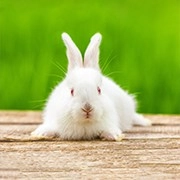Tea Tasting Guide

Hey, Lykkers! As we dive into the world of tea, we can’t help but feel excited about the diverse flavors and aromas waiting to be discovered.
Tasting tea is an art that allows us to explore different varieties and appreciate the nuances in each cup.
The Basics of Tea Tasting
To truly enjoy tea, it’s essential to understand the fundamentals of tea tasting. This process involves not just drinking the tea but also engaging our senses. We’ll focus on three main elements: sight, smell, and taste. By honing these skills, we can elevate our tea-drinking experience.
Preparing for the Tasting
Before we start tasting, let’s prepare our setup:
Choose Your Teas: Select a variety of teas to compare. For example, we can try a green tea, a black tea, and an herbal tea to explore different flavors.
Gather Your Tools: Have a teapot, teacups, a kettle, and a timer ready. If possible, use a clear glass to better observe the tea’s color.
Boil Water: The temperature of the water varies for different types of tea. For example, green tea usually requires water at about 175°F (80°C), while black tea is best brewed at 200°F (93°C).
What Does it Take to be a Professional Tea Taster? |Food Unwrapped
Video by Food Unwrapped
Engaging Our Senses
Now that we’re ready, let’s dive into the tasting process:
Observe the Color: Pour the brewed tea into a clear cup and take a moment to appreciate its color. Is it light and golden or dark and rich? The color can provide insights into the tea’s flavor profile.
Smell the Aroma: Before tasting, bring the cup to our nose and inhale deeply. This step is crucial, as it helps us identify the tea’s characteristics. Is it floral, grassy, or fruity? The aroma can significantly enhance our tasting experience.
Taste the Tea: Take a small sip and let it sit on our palate for a moment. Notice the initial flavors and how they evolve. Is it sweet, bitter, or umami? Pay attention to the texture—does it feel smooth or astringent?
Reflect on the Aftertaste: After swallowing, take note of the aftertaste. Does the flavor linger? This can be an important aspect of the overall experience.
Documenting Our Tasting Experience
As we taste, it can be helpful to take notes. Jot down the flavors, aromas, and textures we encounter. This practice not only enhances our tasting skills but also allows us to remember our favorites for future reference.
Exploring New Varieties
Once we feel comfortable with the basics, let’s explore new tea varieties! We can visit local tea shops or online retailers to find unique blends. Trying teas from different regions or those with interesting flavor profiles can lead to exciting discoveries.

Final Thoughts on Tea Tasting
Tasting tea is a delightful journey that engages our senses and deepens our appreciation for this ancient beverage. By following these steps and experimenting with various teas, we can elevate our tea experience. So, let’s brew our favorite blends and embark on this flavorful adventure together!

 · Food Team
· Food Team